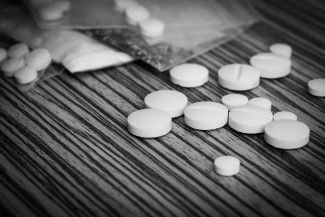What is 'Substance Use'?

In the context of ISSUP’s work the term “substance use” is complex. The following tries to summarise both what “substance use” is, and some of the issues that surround the term.
“Substance” is a term generally used to refer to the use of a range of substances, often referred to as “drugs”.
“Substances” include all psychoactive substances (those chemical substances that change brain function and which can result in alterations to perception, mood, consciousness and/or behaviour) as well as all medications such as prescription drugs, and including alcohol, solvents and tobacco, and even caffeine.*
“Use” is the term that reflects the intake of a “substance”. This can vary from a single use of a substance, to regular use and, at the extremes, habitual use that can result in “dependence” and “addiction”, which can become harmful and problematic. Along this spectrum of “use” there is debate as to when “use” becomes best described as “misuse”, or “abuse” and therefore related to issues of dependence or addiction.
It is important to remember that any substance use has the potential to be harmful depending on a range of considerations that include the substance, the situation or setting, the amount, the mood and the predisposition (biological, psychological, social) of the user. Substance use can contribute towards or trigger reactions and outcomes that can be harmful or negative in respect to mental and/or physical health.
There is substance use that brings benefits. Examples of this come from appropriate use of medications used to prevent or help cure or manage physical or mental health conditions.
In addition, same use of a substance, both in terms of the specific substance and amount used, can also have different effects on different people depending on a range of issues including age, gender, setting, mood and predisposition. The harm (or perceived benefit) resulting from use can therefore differ from individual to individual.
At the same time most, if not all substances, have potential risks from their use, even limited or single use. They all have potential mental or physical health risks, particularly if they are used outside of the perceived wisdom of when, how and how much should be used. Alcohol is a particular example along with prescription drugs. The effects of their use can not only impact the health of the user, but also the user’s behaviour and therefore its effect on others. The relationship between excessive alcohol use and violence is an example of this alongside the physical impact on the user’s body.
Many would suggest that there are no health or other benefits from the use of certain substances, particularly those which are identified as illegal, and such substances as tobacco with the smoking of cigarettes. Others would suggest that the harms (or benefits) depends on the individual user, and that for some people the social or mental health perceived, beneficial outcomes outweigh the potential physical harm that could result. The use of cannabis or cocaine offer examples of this. With respect to cannabis there are some that argue that its use has beneficial medical effects whereas others would point to its relationship towards potential for adverse mental health effects.
In summary “substance use” is a broad term to cover the intake of a wide range of substances, some of which are legal and where use can be socially acceptable; others which are known to be medically beneficial for prevention and treatment if used appropriately; those which are illegal and judged to be harmful; as well as others which are new and whose contents and effects are unknown and open to proper analysis. The use of certain substances can bring benefits if used appropriately and under proper observation. However, because psychoactive substances directly impact the brain and how it functions, their use can have negative physical and mental health outcomes even with very limited intake. This will vary according to the individual, the setting, the mood, and the conditions and predisposition of the user.
*Note
A psychoactive substance and a medication are not the same. A medication is generally a drug or substance that is recognized or appears in an official pharmacopeia or formulary. This means that the medication has been tested and approved by an official group to be used in a specific way for specific health conditions. A medication is intended primarily for use when making a diagnosis, for curing or alleviating the symptoms of a health problem, for the treatment of a disease, and for the prevention of a disease. A medication has been shown through research to be effective for use in the diagnosis, cure, mitigation, treatment, or prevention of disease. It is prescribed by a physician or other trained health professional and the dosage recommended takes into consideration the individual’s characteristics such as age, weight and gender. Furthermore, the patient is monitored over time through visits to the health professional and through laboratory tests.
Jeff Lee